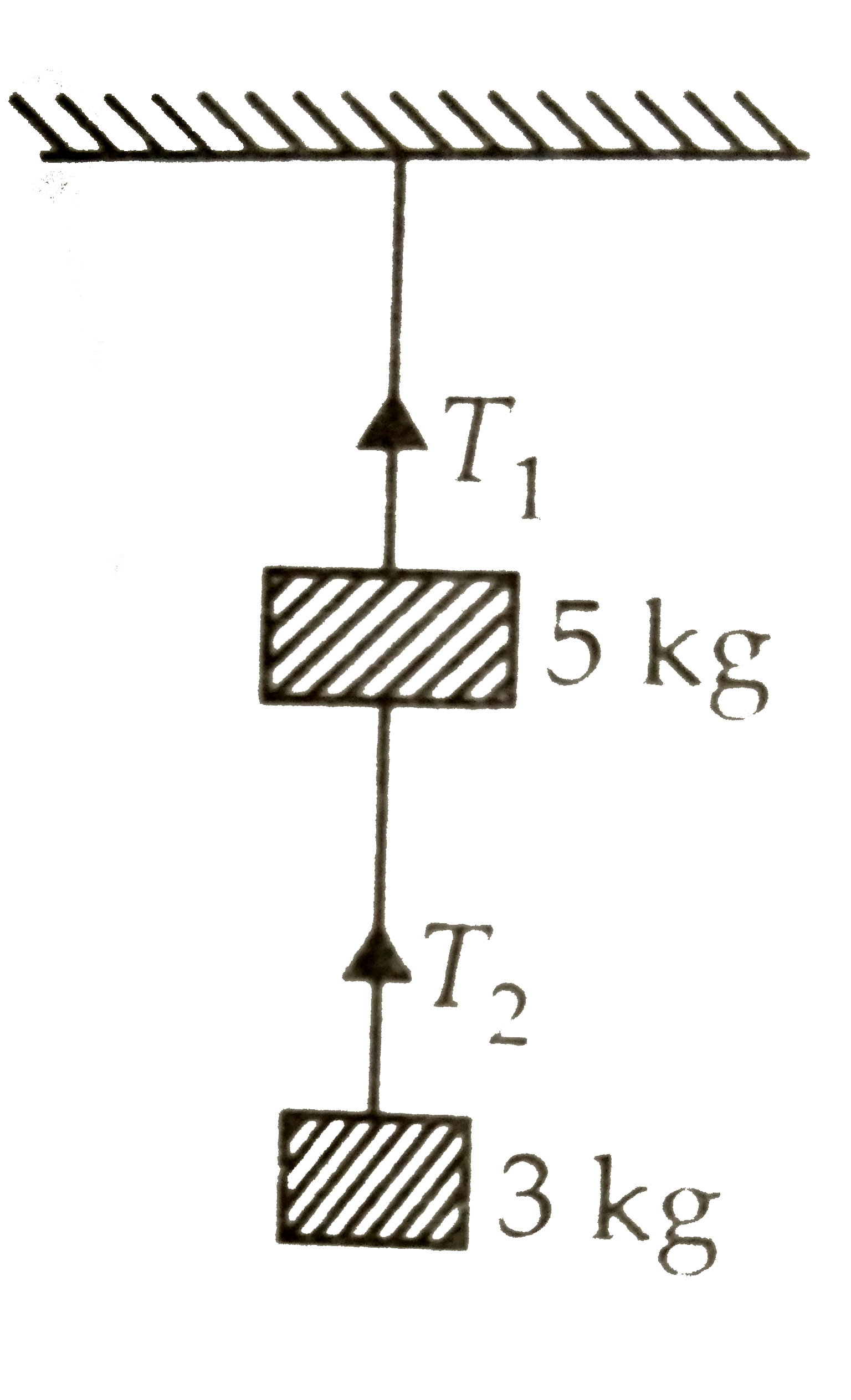A rocket with a lift-off mass is blasted upwards with an initial acceleration of . The initial thrust of the blast is
The correct Answer is:B
To find the initial thrust of the rocket, we can use Newton's second law of motion and the concept of forces acting on the rocket. Here's the step-by-step solution:
Step 1: Identify the forces acting on the rocket
When the rocket is launched, two main forces act on it:
1. The gravitational force acting downward (weight of the rocket).
2. The thrust force acting upward (force produced by the rocket engines).
Step 2: Write the equation for the net force
According to Newton's second law, the net force acting on the rocket can be expressed as:
Fnet=m⋅a
where:
- m is the mass of the rocket,
- a is the acceleration of the rocket.
Step 3: Calculate the gravitational force
The gravitational force (weight) acting on the rocket can be calculated using the formula:
Fgravity=m⋅g
where:
- g is the acceleration due to gravity (given as 10m/s2).
Step 4: Substitute the values
Given:
- Mass of the rocket, m=2×104kg
- Initial acceleration, a=5m/s2
- Gravitational acceleration, g=10m/s2
Calculating the gravitational force:
Fgravity=2×104kg×10m/s2=2×105N
Step 5: Write the equation for thrust
The thrust Fthrust must overcome both the gravitational force and provide the necessary force for upward acceleration. Thus, we can write:
Fthrust=Fgravity+Fnet
Substituting Fnet=m⋅a:
Fthrust=Fgravity+m⋅a
Step 6: Calculate the thrust
Substituting the values:
Fnet=2×104kg×5m/s2=1×105N
Now substituting into the thrust equation:
Fthrust=2×105N+1×105N=3×105N
Final Answer
The initial thrust of the blast is:
Fthrust=3×105N
---
When the rocket is launched, two main forces act on it:
1. The gravitational force acting downward (weight of the rocket).
2. The thrust force acting upward (force produced by the rocket engines).
According to Newton's second law, the net force acting on the rocket can be expressed as:
Fnet=m⋅a
where:
- m is the mass of the rocket,
- a is the acceleration of the rocket.
The gravitational force (weight) acting on the rocket can be calculated using the formula:
Fgravity=m⋅g
where:
- g is the acceleration due to gravity (given as 10m/s2).
Given:
- Mass of the rocket, m=2×104kg
- Initial acceleration, a=5m/s2
- Gravitational acceleration, g=10m/s2
Fgravity=2×104kg×10m/s2=2×105N
The thrust Fthrust must overcome both the gravitational force and provide the necessary force for upward acceleration. Thus, we can write:
Fthrust=Fgravity+Fnet
Substituting Fnet=m⋅a:
Fthrust=Fgravity+m⋅a
Substituting the values:
Fnet=2×104kg×5m/s2=1×105N
Fthrust=2×105N+1×105N=3×105N
The initial thrust of the blast is:
Fthrust=3×105N
Topper's Solved these Questions
- BOOK - NCERT FINGERTPS ENGLISHCHAPTER - LAWS OF MOTIONEXERCISE - HOTS8videos
LAWS OF MOTION
- BOOK - NCERT FINGERTPS ENGLISHCHAPTER - LAWS OF MOTIONEXERCISE - Exemplar Problems9videos
LAWS OF MOTION
- BOOK - NCERT FINGERTPS ENGLISHCHAPTER - KINETIC THEORYEXERCISE - Assertion And Reason10videos
KINETIC THEORY
- BOOK - NCERT FINGERTPS ENGLISHCHAPTER - MECHANICAL PROPERTIES OF FLUIDSEXERCISE - NCERT Exemplar5videos
MECHANICAL PROPERTIES OF FLUIDS
Similar Questions
A rocket with a lift-off mass 3.5×104kg is blasted upwards with an initial acceleration of 10m/s2. Then the initial thrust of the blast is
View SolutionA rocket with a lift-off mass 3.5×104kg is blasted upwards with an initial acceleration of 10m/s2. Then the initial thrust of the blast is
View Solution
Knowledge Check
- Question 1 - Select One
The person o( mass 50 kg slands on a weighing scale on a lift. If the lift is ascending upwards with a uniform acceleration of 9ms−2, what would be the reading of the weighting scale? (Take g=10ms−2)
A50kgB60kgC96kgD176kg - Question 2 - Select One
Two masses of 5 kg and 3 kg are suspended with the help of massless inextensible strings as shown in figure. The whole system is going upwards with an acceleration of 2ms−2. The tensions T1andT(2) are respectively (Take g=10ms−2)
 A96N, 36NB36N,96NC96N,96ND36N,36N
A96N, 36NB36N,96NC96N,96ND36N,36N
A rocket with a lift-off mass 3.5×104kg is blasted upwards with an initial acceleration of 10m/s2. Then the initial thrust of the blast is
View SolutionA rocket with a lift off mass 20000 kg is blasted upwards with a net initial acceleration of 5ms−2 Calculate the initial thrust (force) of the blast.
View SolutionA lift of mass 200 kg is moving upward with an acceleration of 3m/s2 . If g=10m/s2 then the tension of string of the lift will be :
View SolutionThe mass of a lift if 600kg and it is moving upwards with a uniform acceleration of 2m/s2. Then the tension in the cable of the lift is :
View SolutionA balloon of mass 10 kg is raising up with an acceleration of 20ms−2. If a mass of 4 kg is removed from the balloon its acceleration becomes ( take, g=10ms−2)
View SolutionA balloon os mass 2 KG is rising up with an acceleration of 4ms2 . The upward force acting on the balloon is (g = 10 ms^-2)
View Solution

